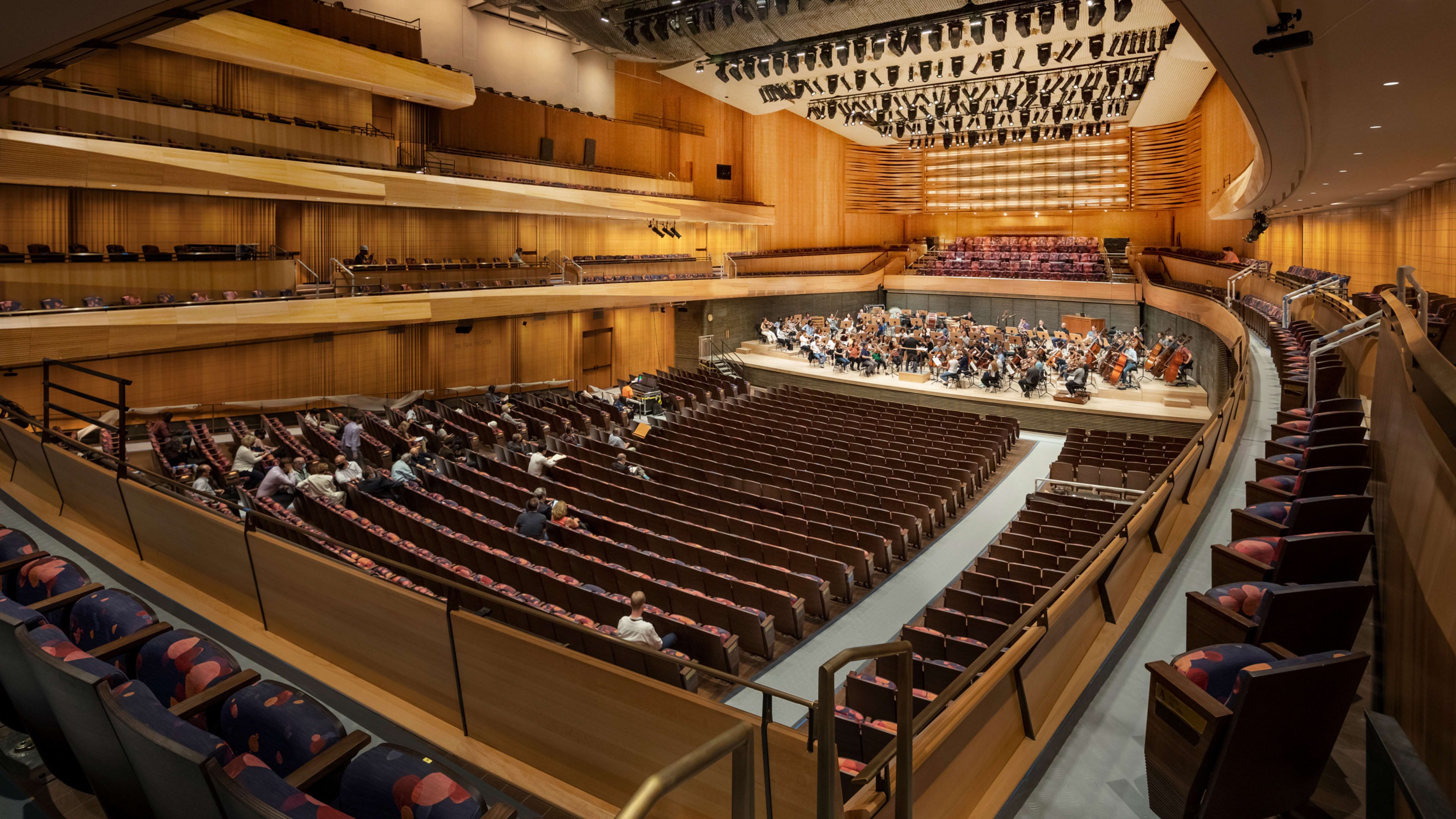In subtle and not-so-subtle ways, New York’s Lincoln Center is trying to stretch outside its snooty, high society foundations. With a $550 million renovation, one of the country’s preeminent cultural institutions has used a couple of weird pandemic years to redesign itself physically and ideologically. David Geffen Hall, home to the New York Philharmonic, has undergone a full gutting, with a renewed concert space that aims to address longstanding acoustic issues. Alongside, it has revamped much of the rest of its campus to be more open to the public—and more welcoming to potential audiences that may have never even considered stepping foot there. The concert hall is the center of the work, but what’s happening outside the ivory walls of this hallowed institution could be what helps give it new life.

The change may be hard to see at first glance. A 16-acre mid-century megaproject with more than a dozen performance and arts venues near the edge of Central Park, Lincoln Center has become an architectural icon, so a heavy facelift was unlikely. Geffen Hall’s exterior façade has been preserved, but the interior has been totally reconfigured, with 500 seats removed and its now 2,200-person capacity rainbowing a stage that’s set 25 feet closer to the audience. The renovated concert hall, now named the Wu Tsai Theater— for a $50 million donation from Chinese e-commerce site Alibaba cofounder Joseph Tsai and wife Clara Wu Tsai—is the centerpiece of a refresh at Lincoln Center that’s involved creating new public spaces and a major shakeup of the cultural institution’s leadership.
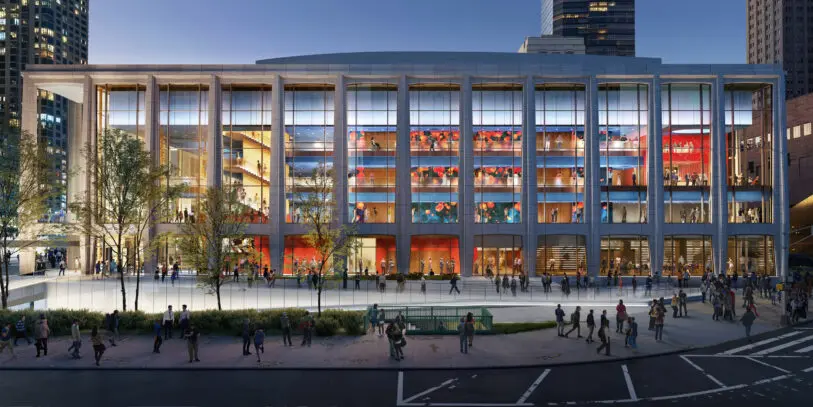
Henry Timms, president and CEO of Lincoln Center, took the top job there in 2019, just before the pandemic shuttered doors and cancelled performances. He’d come in with plans to expand Lincoln Center’s reach, along the lines of what he’d done in his previous position heading the 92nd Street Y, another venerable New York performance and events venue. Lincoln Center, with its sometimes stodgy menu of opera, ballet, and classical music, was overdue for a reappraisal of its external appeal.
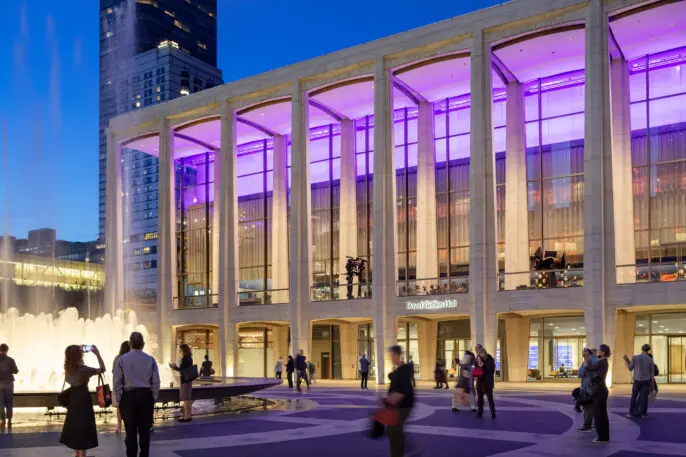
“These big old institutions, it’s really hard to get them to move quick. They’re very good at impact, they’re very good at prestige, they’re usually quite bad at being nimble,” Timms says. The pandemic offered some flexibility. The closures allowed construction on the Geffen Hall project to speed up. The renovation was completed two years ahead of schedule, and has a novel curvilinear seating arrangement, which brings the audience closer to the performers and improves the musicians’ ability to hear each other on stage. The lack of normal operations at Lincoln Center also prompted other community-focused work Timms had hoped to get started eventually. “Suddenly you could actually do things quicker,” he says.
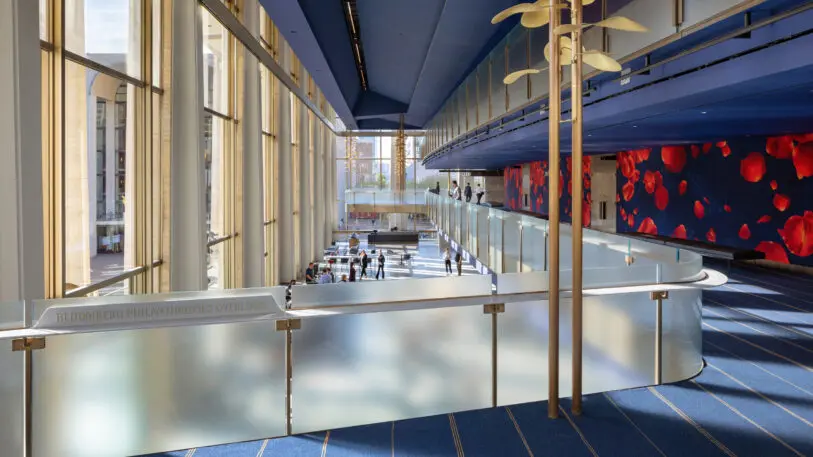
With its concert halls and performance spaces closed, Lincoln Center’s leadership started looking beyond its walls, finding new opportunities for performances outdoors around the city and in the public spaces it has on its own grounds. Timms says the pandemic’s early devastation in New York convinced him and others that Lincoln Center could not be just an arts organization, but also a civic organization. It began operating a food bank, a blood donation center, voter registration and polling places, and sites coordinating the 2020 Census. The leadership itself even changed, with the mostly white and male board now closer to gender parity, with 30% people of color. The executive staff, too, previously all white, is now made up of 60% people of color. A majority of positions are held by women.

Redesigning Lincoln Center, including the interior of Geffen Hall by Diamond Schmitt Architects and several public-facing spaces on campus by Tod Williams Billie Tsien Architects, became instrumental to this more expansive, more diverse version of the 63-year-old institution.
“The best example, and it’s a pretty good metaphor for the project, the lobby has doubled in size,” says Timms. A space formerly dedicated to a line of ticket windows now features a publicly accessible lobby with a café that’s open all day, even when there are no performances scheduled. When there are, a 50-foot video screen will simulcast what’s on stage. “If you’re wandering by and the philharmonic is playing, you can watch the performance for free,” Timms says.

Updating the “hardware” and the “software”
Timms describes the physical and cultural changes happening at Lincoln Center as updates to its hardware and software.” David Geffen Hall is very much a hardware decision,” he says. “It’s not just a concert hall. It’s designed to have these big, expansive community spaces throughout that allow more people to have more interactive and immersive and engaged experiences.”
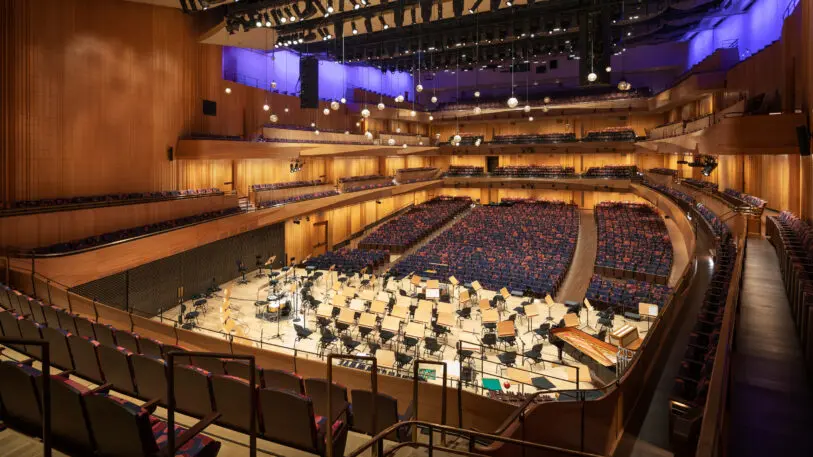
Lincoln Center’s programming is the software, says Timms, and that is also undergoing a dramatic change for a place steeped in traditions of black-tie opera events and tickets priced beyond the reach of many of the city’s residents. “What you can’t do is simply show up with different architecture and the same programming,” Timms says.
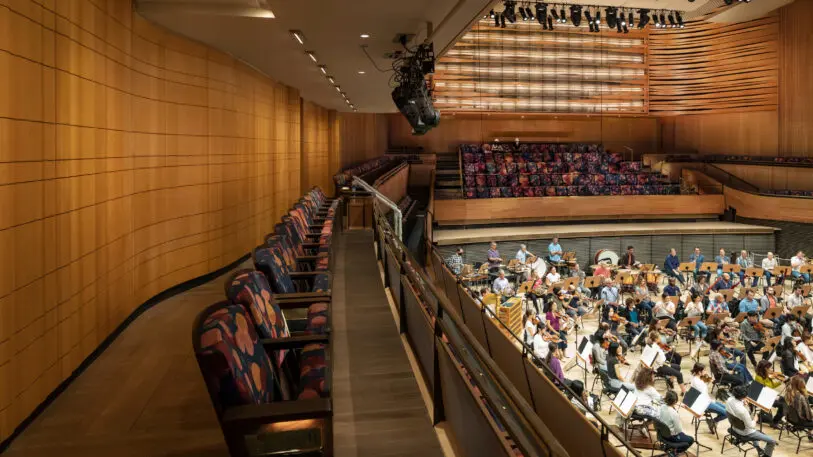
That’s why Lincoln Center hired as its new chief artistic officer Shanta Thake, a former associate artistic director at the Public Theater and codirector of GlobalFEST, a world music festival that’s been running in New York for nearly 20 years. One of her first projects at Lincoln Center was to turn its iconic central plaza and fountain into an outdoor dance hall, complete with a 10-foot hanging disco ball. The same space was also used for a mass wedding ceremony, turning its famed plaza into a venue for 500 weddings put off by—or resulting from—the pandemic. Thake also programmed concerts across the city, bringing classical music out from its traditional concert hall setting and putting it closer to the public, including some events with a pay-what-you-want pricing structure. These events brought in an atypically diverse audience for the organization, with about half people of color, half under the age of 45, and a quarter new to Lincoln Center.
Thake says the redesign at Lincoln Center is part of bringing that audience to its more regular programming. “We have this opportunity to bring that audience indoors,” she says. “I think that’s the amazing challenge, and luckily we have a building that’s capable of that.”
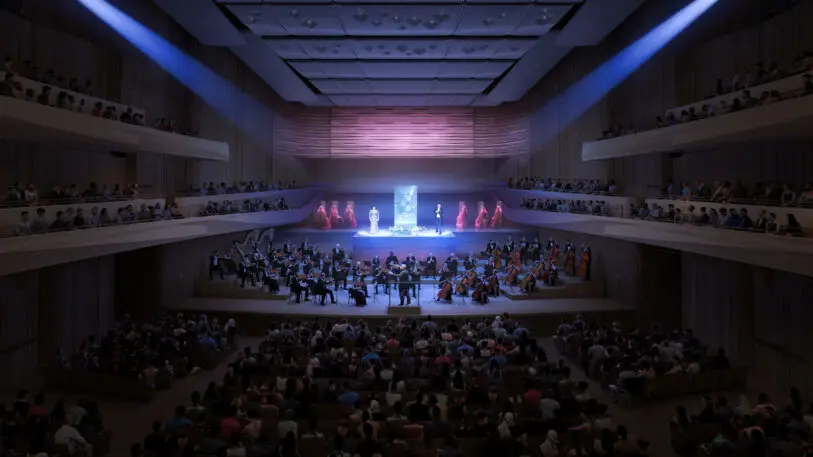
But that doesn’t mean Lincoln Center is reverting back to its conventional programs. The first performance at the new Geffen Hall was the world premiere of San Juan Hill: A New York Story, composed and performed by Trinidadian trumpeter Etienne Charles and his band Creole Soul, alongside the Philharmonic. The piece is in reference to San Juan Hill, a prominent Hispanic and Black neighborhood that Robert Moses razed back in the 1950s to make room for Lincoln Center. Thake says the piece, commissioned by Lincoln Center, is an effort to grapple with the past and push the institution in a new direction. “I think you’re going to see us continuing to talk about it,” she says.
And that also may involve further architectural work. Timms says that Lincoln Center was originally designed to open up to one side of the city, where the bustle of Midtown bleeds into the affluence of the Upper West Side, but closed off to another, where a large public housing project is located. “The east of our campus is very welcoming, and the west of our campus is very imposing. That was a choice made at the beginning of Lincoln Center, but we’re now thinking about the west of campus and what can we do there,” Timms says. “That’s our next project.”
Recognize your brand’s excellence by applying to this year’s Brands That Matter Awards before the early-rate deadline, May 3.
